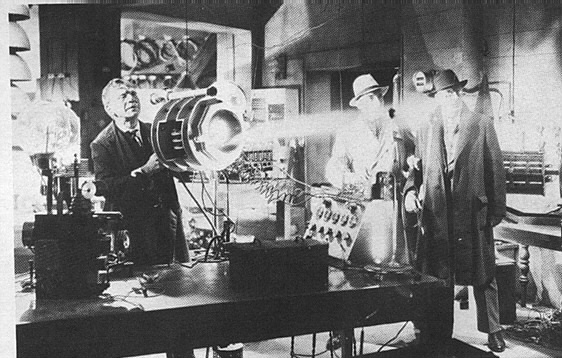And a Periodic Chart Comparison
The Type 1 category of superconductors is mainly comprised of metals and metalloids that show someconductivity at room temperature. They require incredible cold to slow down molecular vibrations sufficiently to facilitate unimpeded electron flow in accordance with what is known as BCS theory. BCS theory suggests that electrons team up in "Cooper pairs" in order to help each other overcome molecular obstacles - much like race cars on a track drafting each other in order to go faster. Scientists call this process phonon-mediated coupling because of the sound packets generated by the flexing of the crystal lattice.
Type 1 superconductors - characterized as the "soft" superconductors - were discovered first and require the coldest temperatures to become superconductive. They exhibit a very sharp transition to a superconducting state (see above graph) and "perfect" diamagnetism - the ability to repel a magnetic field completely. Below is a list of known Type 1 superconductors along with the critical transition temperature (known as Tc) below which each superconducts. The 3rd column gives the lattice structure of the solid that produced the noted Tc. Surprisingly, copper, silver and gold, three of the best metallic conductors, do not rank among the superconductive elements. Why is this ?
Lead (Pb) Lanthanum (La) Tantalum (Ta) Mercury (Hg) Tin (Sn) Indium (In) Palladium (Pd)* Chromium (Cr)* Thallium (Tl) Rhenium (Re) Protactinium (Pa) Thorium (Th) Aluminum (Al) Gallium (Ga) Molybdenum (Mo) Zinc (Zn) Osmium (Os) Zirconium (Zr) Americium (Am) Cadmium (Cd) Ruthenium (Ru) Titanium (Ti) Uranium (U) Hafnium (Hf) Iridium (Ir) Beryllium (Be) Tungsten (W) Platinum (Pt)* Lithium (Li) Rhodium (Rh) | 7.196 K 4.88 K 4.47 K 4.15 K 3.72 K 3.41 K 3.3 K 3 K 2.38 K 1.697 K 1.40 K 1.38 K 1.175 K 1.083 K 0.915 K 0.85 K 0.66 K 0.61 K 0.60 K 0.517 K 0.49 K 0.40 K 0.20 K 0.128 K 0.1125 K 0.023 K (SRM 768) 0.0154 K 0.0019 K 0.0004 K 0.000325 K | FCC HEX BCC RHL TET TET (see note 1) (see note 1) HEX HEX TET FCC FCC ORC BCC HEX HEX HEX HEX HEX HEX HEX ORC HEX FCC HEX BCC (see note 1) BCC FCC |
*Note 1: Tc's given are for bulk (alpha form), except for Palladium, which has been irradiated with
He+ ions, Chromium as a thin film, and Platinum as a compacted powder.
He+ ions, Chromium as a thin film, and Platinum as a compacted powder.
Many additional elements can be coaxed into a superconductive state with the application of high pressure. For example, phosphorus appears to be the Type 1 element with the highest Tc. But, it requires compression pressures of 2.5 Mbar to reach a Tc of 14-22 K. The above list is for elements at normal (ambient) atmospheric pressure. See the periodic table below for all known elemental superconductors (including Niobium, Technetium and Vanadium which are technically Type 2).
***Note 3: For a list of elements that are naturally diamagnetic, click HERE.
[Last page rev: May. 2007]
http://www.superconductors.org/Type1.htm




0 Comments